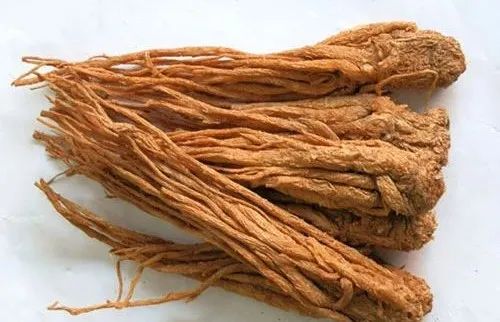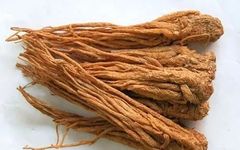Angelica Sinensis (Dang Gui)

1. Dang Gui for Pregnancy Testing: Angelica Sinensis is one of the most commonly used herbs in Traditional Chinese Medicine (TCM), historically referred to as “nine out of ten prescriptions include Dang Gui.”
Dang Gui is known for its ability to nourish blood and invigorate blood circulation, as well as regulate menstruation and relieve constipation. It is often regarded as a sacred herb for women’s health, used to treat various gynecological disorders. Many renowned physicians have unique insights into the application of Dang Gui.
Dr. Xu Run San from the China-Japan Friendship Hospital skillfully utilizes Dang Gui, combining it flexibly with other herbs, and has gained significant experience.
Dr. Xu combines Dang Gui with Chuan Xiong (Ligusticum chuanxiong), forming the Fo Shou San (Buddha’s Hand Powder) from the Song Dynasty’s Pu Ji Ben Shi Fang, primarily used for pregnancy testing. Ancient texts state that after taking this formula, “if the fetus is dead, it will be expelled; if the fetus is alive, it will be safe, with effects as miraculous as Buddha’s hand.” Hence, it is named after Buddha’s hand.
Clinical practice by Dr. Xu has shown that for certain cases of threatened miscarriage where preservation treatments are ineffective, and pregnancy tests turn negative or fetal movement ceases, this formula has consistently yielded good results.
If the fetus is still viable, taking this formula can stop early pregnancy abdominal pain and vaginal bleeding, restoring positive pregnancy test results; for later stages of pregnancy, adding Ping Wei San (Calm the Stomach Powder) and Mang Xiao (Mirabilite) can restore fetal movement.
Patients with amenorrhea can also try this formula combined with Gui Zhi Tang (Cinnamon Twig Decoction).
For pregnant women, there may be a sensation of movement in the lower abdomen and an increased pulse; for non-pregnant women, this sensation is absent. “Repeated use has proven effective, though the mechanism remains to be studied.”
2. Dang Gui for Yang Invigoration: The late renowned physician Yue Mei Zhong believed that Dang Gui has a yang invigorating effect.
Dr. Yue once discussed a patient with kidney stones who suddenly experienced impotence during treatment. At that time, a doctor suggested adding warming herbs like Rou Gui (Cinnamon) and Fu Zi (Aconite), but Dr. Yue advocated for using the mild and balanced Dang Gui to avoid depleting true yin and causing further issues.After using Dang Gui, the patient indeed saw improvement.
Dr. Yue’s insights are profound, teaching that one should not hastily prescribe yang-invigorating herbs for impotence, to avoid complicating the situation.
At this time, nourishing blood to generate essence is essential, as stated by the Sui Dynasty’s Chao Yuan Fang: “Essence is formed from the energy of blood.” The late Qing Dynasty’s Tang Rong Chuan also emphasized adding blood-nourishing ingredients in formulas for replenishing essence.
This case demonstrates that Dang Gui not only nourishes blood but also invigorates yang. The multifaceted effects of Dang Gui further validate Dr. Yue’s adept use of herbs.
3. Dang Gui for Constipation: Historical medical cases also highlight the remarkable uses of Dang Gui.
There was a female patient who, twenty days postpartum, suddenly developed a fever, headache, body aches, limb soreness, chest fullness, loss of appetite, and constipation.
One physician diagnosed her with external cold combined with food stagnation and disharmony of qi and blood, prescribing Sheng Liao Wu Ji San (Five Accumulations Powder). After one dose, all symptoms resolved except for the persistent headache and constipation. Further doses proved ineffective, leading to a consultation with Mr. Miao Zhong Chun.
Mr. Miao examined her and advised adding one tael of Dang Gui. After taking it, the patient experienced smooth bowel movements, and her headache ceased immediately.
Additionally, throughout history, physicians have often utilized different parts of Dang Gui—head, body, and tail—believing that the head stops bleeding, the tail promotes blood flow, the body nourishes blood, and the whiskers open the meridians, all contributing to harmonizing blood.
In the Ming Dynasty, Li Shi Cai stated in Lei Gong Pao Zhi Yao Xing Jie that using the whole herb is less effective than using specific parts, indicating that there are differences in efficacy among the head, body, and tail of Dang Gui.
THE END

Disclaimer: The prescriptions listed in this public account article are for educational exchange only. Non-TCM professionals should not attempt to self-medicate and should use under the guidance of a physician.

